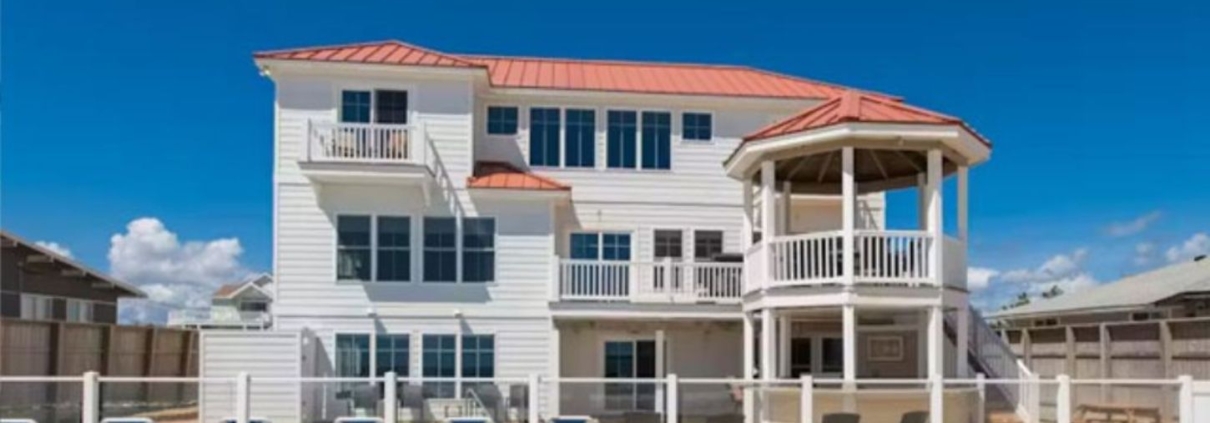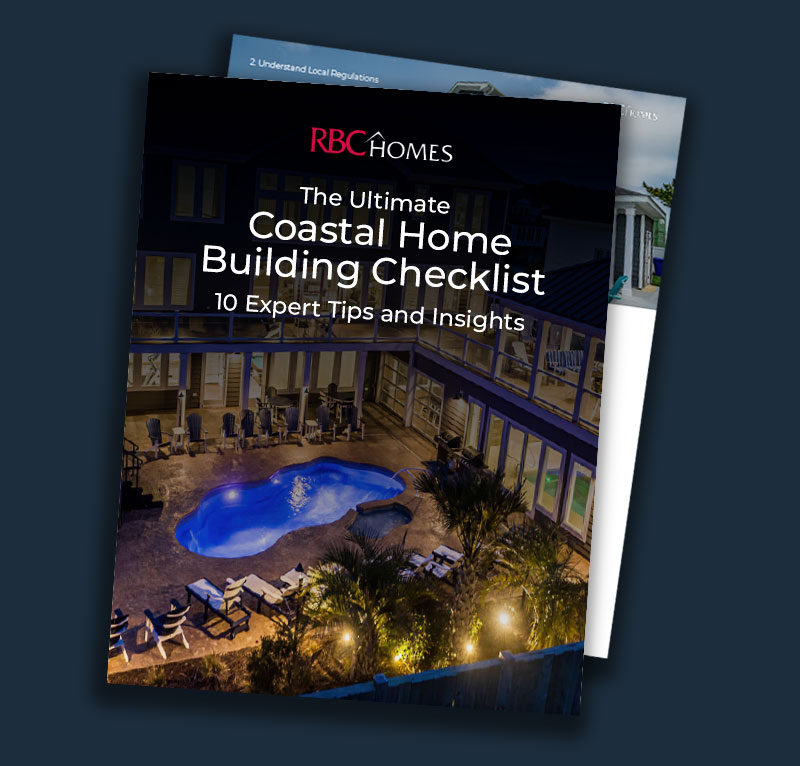Building a Custom Home – All You Need to Know!
Did you know that according to a recent realtor survey, Virginia Beach is ranked as one of the top 10 beach towns in the U.S. to live in?
With its stunning coastline and vibrant community, it’s no wonder!
Imagine waking up to the sound of crashing waves and stepping outside your front door onto the soft Virginia Beach sand.
This dream can become reality when you build your own custom home in this vibrant coastal city.
Building a custom home in Virginia Beach is an exciting journey, but it can also feel overwhelming.
This guide will simplify the process, taking you step-by-step from envisioning your dream home to the final inspection and that celebratory move-in day.
Here are the steps:
Step 1: Charting the Course for Your Dream Home
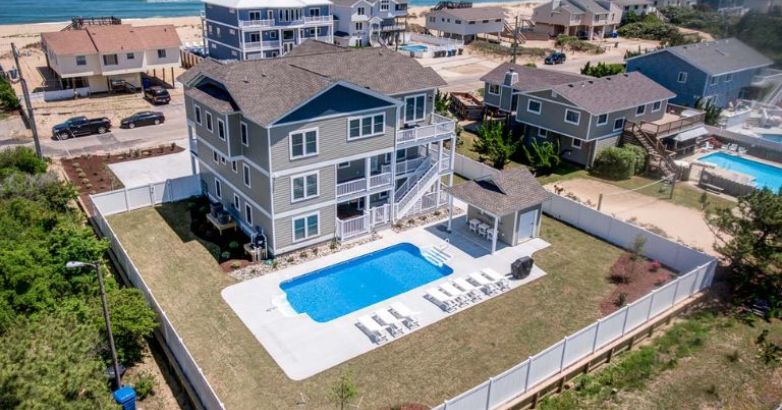
This is where the magic begins!
Before diving into specifics, take some time to envision your ideal custom home.
Here’s what to consider:
- Budgeting for Success: Establish a realistic budget that encompasses the entire project, including land acquisition, construction costs, materials, permits, and even a buffer for unforeseen expenses.
- Lifestyle Design: Think about how you’ll use the space. Do you need a dedicated home office for remote work? A spacious entertainment area for hosting gatherings? Factor in your hobbies and future needs.
- Finding Your Architectural Harmony: Research architectural styles that resonate with you and complement Virginia Beach’s unique environment. Explore the timeless elegance of coastal-inspired designs, the charm of craftsman bungalows, or the clean lines of modern architecture.
Step 2: Securing Your Dream Home’s Foundation
Choosing the right location is crucial for a successful custom home build.
Here’s a breakdown of key factors to consider:
Oceanfront Bliss:
Virginia Beach boasts over 35 miles of stunning coastline.
While beachfront property offers unparalleled views and waterfront access, be mindful of potential flood risks and stricter zoning regulations.
Consulting a realtor with expertise in oceanfront properties is highly recommended.
Neighborhood Nuances:
Virginia Beach offers a diverse range of established neighborhoods, each with its unique character.
Established areas often have mature trees, well-regarded schools, and a strong sense of community. Up-and-coming areas may offer more affordable options and a chance to be part of a growing community.
Research each area’s proximity to amenities, schools, and public transportation to ensure it aligns with your lifestyle needs.
Lot Logistics:
The size, slope, and soil conditions of the lot significantly impact your home’s design and construction costs.
- A larger lot provides more flexibility for a sprawling design, while a smaller lot might necessitate a multi-story approach.
- Evaluate the slope of the land; a steeper grade might require additional foundation work.
- Soil composition also plays a role; sandy soil might require specific foundation types.
- Consider consulting a licensed geotechnical engineer to assess the specific lot and provide recommendations.
Step 3: The Experts Who Bring Your Dream Home to Life
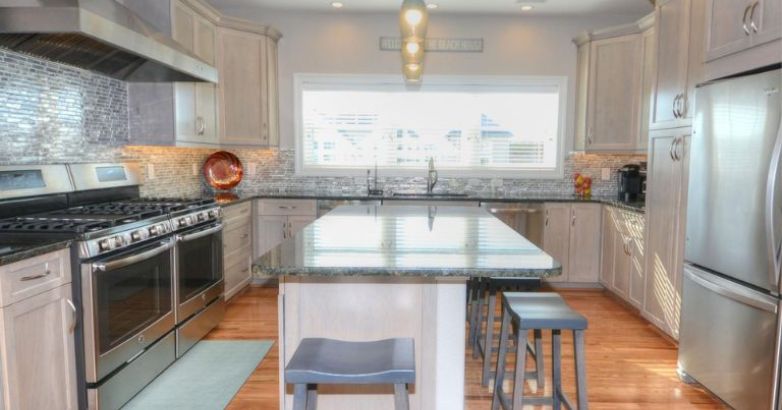
Assembling a skilled and experienced team is essential for a smooth and successful custom home build. Here are the key players you’ll want on your side:
The Visionary Architect:
A licensed architect with expertise in custom home construction in Virginia Beach is your first point of contact.
According to the National Council of Architectural Registration Boards (NCARB), a staggering 78% of homeowners who hire architects report being satisfied or very satisfied with the overall project.
Look for an architect with a portfolio that aligns with your desired style and who can translate your vision into a detailed and functional plan.
Don’t hesitate to ask for references and check their credentials with the Virginia Beach Department of Professional and Occupational Regulation (DPOR).
The Master Builder:
Finding a reputable and experienced builder is paramount.
Look for a Virginia Beach-licensed builder with a proven track record of constructing high-quality custom homes.
The National Association of Home Builders (NAHB) recommends getting at least three quotes from different builders.
Ask for references, check their online reviews, and verify their licenses and insurance with the DPOR. A trustworthy builder will ensure your project adheres to building codes, uses high-quality materials, and prioritizes safety throughout the construction process.
Rounding Out the Team:
Depending on the complexity of your project, you may need additional specialists.
Structural engineers ensure your home’s foundation and framework can withstand the elements. Interior designers help you create a cohesive and stylish living space.
Landscape architects can design outdoor areas that complement your home and lifestyle.
Step 4: The Permitting Process in Virginia Beach
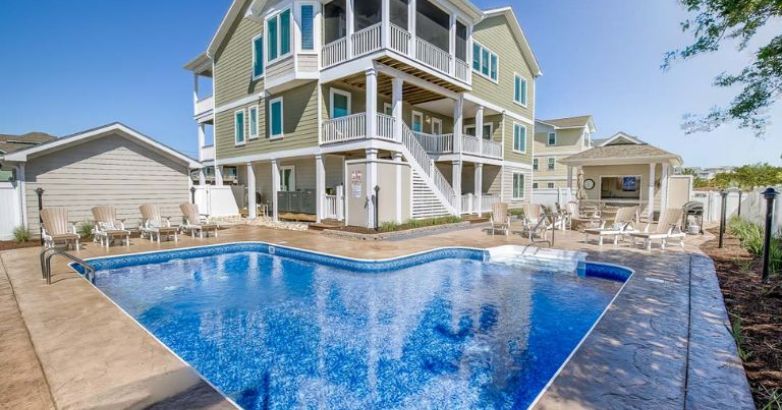
Obtaining the necessary permits is a crucial step before construction commences.
While the process might seem daunting, a clear understanding of Virginia Beach’s regulations and close collaboration with your team will ensure a smooth journey.
Understanding Local Requirements:
Virginia Beach, like most municipalities, has specific zoning ordinances and permitting procedures for custom home construction.
Familiarize yourself with these regulations, which can be found on the City of Virginia Beach’s website or by contacting the Department of Planning and Community Development.
According to a survey by the NAHB, an average of 4-6 permits are typically required for new home construction.
These can include:
- Permits for building,
- Electrical work,
- Plumbing,
- mechanical systems,
- additional permits depending on your project’s specifics.
Teamwork Makes the Dream Work:
Don’t navigate the permitting process alone.
Your architect and builder are well-versed in Virginia Beach’s regulations and will guide you through the process.
They will handle most of the paperwork and ensure all necessary permits are obtained before construction begins.
However, having a basic understanding of the permitting requirements allows you to ask informed questions and stay involved throughout the process.
Step 5: The Construction Phase in Virginia Beach
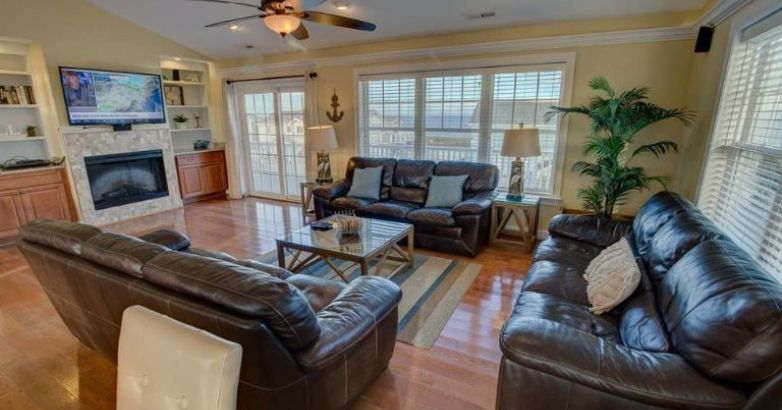
This is where the magic truly happens!
Your custom home in Virginia Beach starts to transform from blueprints into a reality.
Here’s a glimpse into the exciting phases of construction:
Laying the Foundation for Success:
The initial stage involves setting the foundation, the hidden but crucial element that ensures your home’s stability.
The NAHB reports that foundation work typically takes 2-4 weeks, depending on the size and complexity of the project.
During this stage, you’ll see the foundation walls being poured or constructed, and meticulous attention will be paid to code compliance and soil conditions.
From Frame to Function:
Once the foundation cures, framing begins.
This stage creates the skeleton of your home, including walls, roof, and floor joists. Witnessing the basic structure emerge is a significant milestone.
Following the framing, rough-in work for plumbing, electrical, and HVAC systems takes place.
This ensures these vital systems are seamlessly integrated before further construction.
Insulation is then installed to regulate temperature and improve energy efficiency.
Your Design Decisions Take Center Stage:
As construction progresses, you’ll have exciting opportunities to personalize your space.
This is where you’ll select finishes like flooring, cabinetry, countertops, and lighting fixtures.
Your choices in this stage will significantly influence the overall aesthetic and functionality of your home.
Don’t hesitate to consult with your architect or interior designer for guidance in creating a cohesive and stylish living environment.
Step 6: Final Inspections and Your Dream Home Awaits!
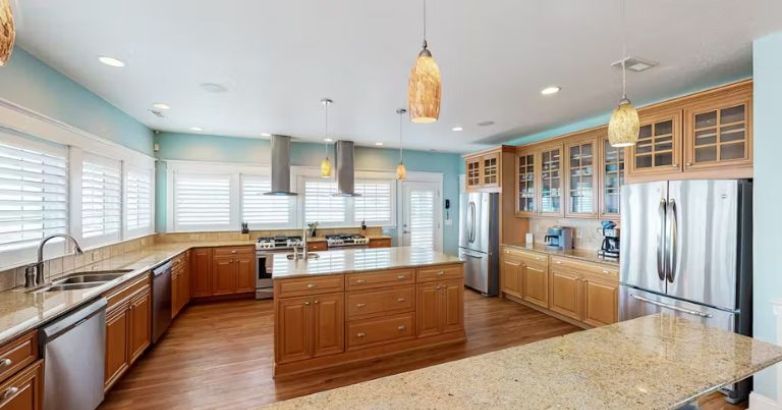
After months of meticulous planning and construction, the big moment arrives!
Here’s what to expect as you approach the final hurdle:
The Final Hurdle: Inspections & Approvals
Multiple inspections by qualified professionals are required to ensure your custom home adheres to building codes, safety regulations, and Virginia Beach’s specific ordinances.
These inspections typically cover electrical, plumbing, mechanical systems, fire safety, and structural integrity.
According to NAHB, an average of 3-5 inspections are conducted throughout the construction process.
Working closely with your builder throughout construction helps ensure a smooth inspection process.
The Coveted Certificate of Occupancy (CO):
Once all inspections are successfully passed, you’ll receive the Certificate of Occupancy (CO).
This official document signifies that your home meets all safety and code requirements and is officially habitable!
Living the Virginia Beach Dream:
Congratulations!
You’ve reached the pinnacle of your custom home building journey.
It’s time to celebrate your accomplishment and embrace life in your very own haven designed specifically for you and your loved ones.
Enjoy the unparalleled coastal lifestyle Virginia Beach offers, whether it’s relaxing on the beach, exploring vibrant neighborhoods, or indulging in the city’s many recreational activities.
Avoiding Common Pitfalls for Your Dream Home
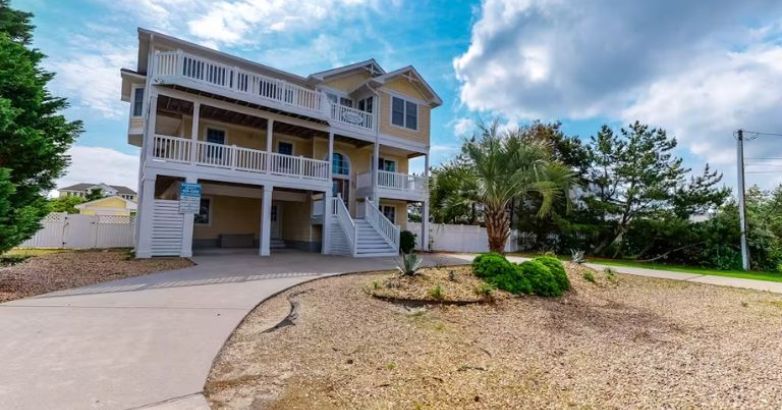
Building a custom home in Virginia Beach is an incredibly rewarding experience, allowing you to create a space that perfectly suits your needs and embodies a sustainable lifestyle.
Here’s how to ensure a smooth and successful journey:
- Plan Smart: Define your must-have features and desired aesthetic upfront.
- Embrace Green: Incorporate eco-friendly elements like energy-efficient appliances for a sustainable home.
- Budget Wisely: Set a realistic budget and stick to it with your builder.
- Be Flexible: Expect adjustments and work with your builder for creative solutions.
- Hire Pros: Choose a team of experienced architects and builders.
- Communicate Clearly: Regularly discuss your vision, questions, and updates with your team.
- Enjoy the Journey! Savor building your dream home in Virginia Beach.
Identify Inspiration:
Need a spark to ignite your vision? Check out RBC Homes’ Gallery page for design inspiration, featuring a variety of styles to suit your taste.
Benefits of a Custom Home Builder: Your Dream, Our Expertise
Building a custom home in Virginia Beach can be overwhelming.
RBC Homes simplifies the process:
- Expert Guidance: We guide you from initial vision to completion, regardless of your starting point.
- Seamless Management: We handle design, permits, construction, and quality control, ensuring a smooth and compliant build.
- Peace of Mind: Our experienced team takes care of the details, allowing you to enjoy the journey.
Choose RBC Homes: We partner with leading architects, designers, and subcontractors to deliver exceptional quality and value for your dream home.
Custom Homes vs. Pre-Built in Virginia Beach
We’ve delved into the exciting world of custom homes in Virginia Beach. But now comes a critical decision: should you build from scratch or choose a pre-built home?
Consider the unique advantages of a custom build:
- Uniquely You: Design a space that reflects your personality and lifestyle. From a dedicated home office to an airy kitchen, every detail is yours to choose.
- Premium Quality: Select high-quality materials and features that ensure lasting value and comfort.
- Smart & Sustainable: Incorporate energy-efficient features and smart home technology for a future-proof haven.
While pre-built homes offer a faster move-in time, they come with limitations:
- Limited Customization: Choose from pre-designed layouts and finishes, with less room for personalization.
- Potential Quality Concerns: Quality can vary depending on the builder’s standards.
| Custom Homes | Pre-Built Homes |
| Higher-quality materials, but more expensive | Limited customization options |
| Ultra-tailored and unique designs, but longer construction times | Potential quality loss, but faster move-in time |
| Ability to incorporate smart and energy-efficient features | Less unique, but more cost-effective |
Ready to craft your dream home? Our experienced team will guide you through every step of the process. Contact us today to discuss your vision and explore the possibilities!
Custom Home 2025 Trends: Reflect You, Embrace the Future
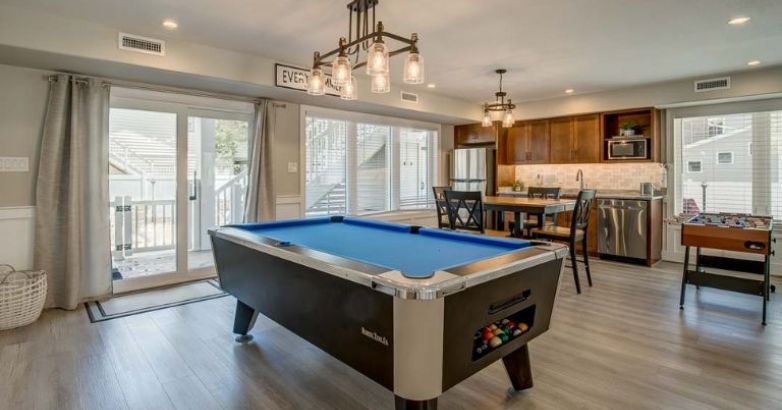
Your custom home should be a timeless expression of your style, but staying informed about current trends can ensure it feels fresh and innovative.
Here are some of the hottest trends in custom home design for 2025, shaping the future of luxury living:
Sustainable Sophistication:
Eco-conscious features are no longer just an option;
they’re becoming a hallmark of luxury. Look for builders who integrate elements like solar panels, geothermal HVAC systems, water-harvesting systems, and smart home technology for automated energy management.
These features not only reduce your environmental impact but can also lead to significant long-term cost savings.
Wellness-Focused Design:
The idea of “home as a sanctuary” is constantly evolving.
In 2025, expect to see custom homes with dedicated wellness spaces like yoga studios, home gyms with cutting-edge equipment, or even built-in steam showers and saunas.
These features allow you to prioritize your well-being within the comfort of your own home.
Smart Kitchens & Bathrooms:
Technology seamlessly integrates into the heart of the home.
Custom kitchens are being designed with smart appliances, voice-activated controls, and innovative storage solutions.
Similarly, luxury bathrooms are featuring smart showers, heated floors, and spa-like fixtures for a truly elevated experience.
Multigenerational Living:
As families evolve, so do housing needs.
Custom homes in 2025 cater to multigenerational living by incorporating features like in-law suites, separate living areas, and accessible design elements.
This allows families to live comfortably under one roof while maintaining privacy and independence.
Remember, these trends are a springboard for inspiration. The true beauty of a custom home lies in tailoring it to your unique vision and lifestyle.
Coastal Luxury: RBC Homes’ Visionary Projects
At RBC Homes, transforming dreams into reality is our passion.
Explore our portfolio and discover a collection of inspiring custom homes in Virginia Beach, each a testament to our dedication to quality craftsmanship and exceptional design.
Step Inside Unforgettable Spaces:
“All Inn”
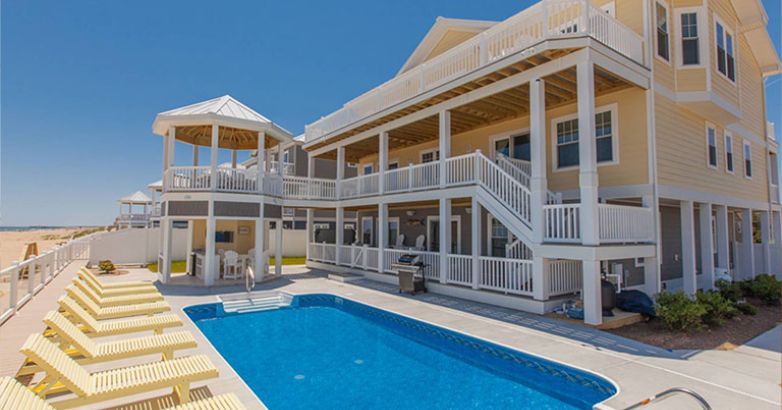
Embrace panoramic ocean views and unparalleled elegance in this luxurious haven.
Imagine waking up to breathtaking sunrises and sunsets, or witnessing playful dolphins from your private viewing decks.
This is coastal living at its finest.
“At Last”
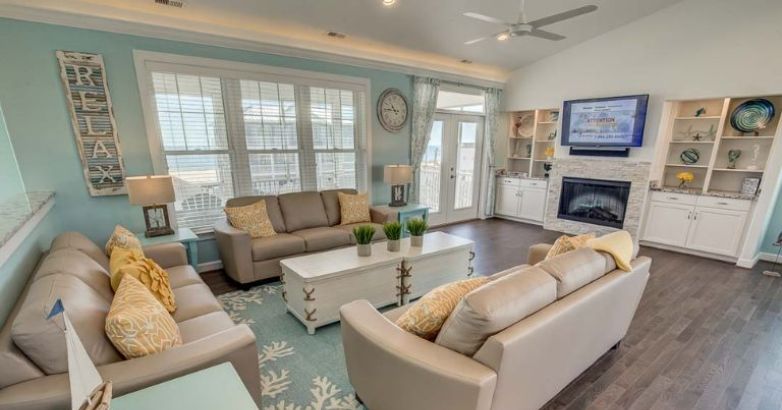
Perfect for family gatherings, “At Last” boasts seven master bedrooms, a spacious gourmet kitchen, and an elevator for effortless access.
Stunning ocean views and an expansive open-concept living area create the perfect space to connect and unwind.
Relax by the poolside cabana bar or enjoy a game night in the rec room. “At Last” offers a luxurious escape for all.
“Ruff Life”
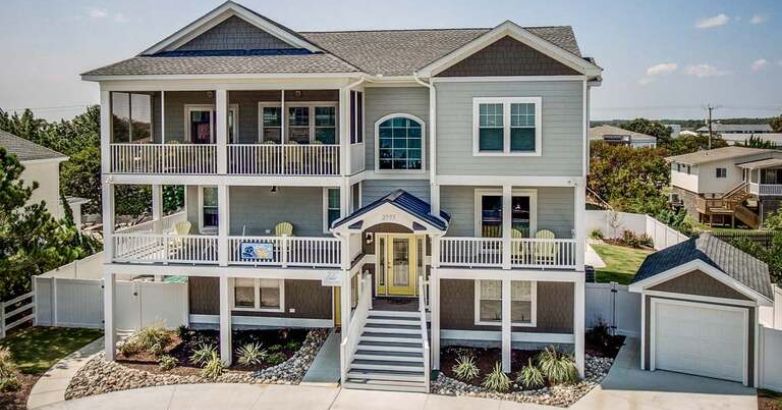
This 9-bedroom oasis features a brand new 2025 upgrade: a master suite with three double beds for ultimate comfort.
Unwind by the private pool, entertain at the cabana bar, or simply soak in the breathtaking views. “Ruff Life” welcomes families and furry friends alike, offering refined interiors, hardwood floors, and premium amenities.
This is coastal living redefined.
Beyond the Showcase: Looking for more inspiration?
Don’t just dream it, live it.
Contact RBC Homes today and let us turn your vision into a reality.
Beyond the Showcase:
Explore our extensive gallery to discover a wider range of custom homes that reflect diverse styles and features.
And don’t forget to check our testimonials to hear from satisfied clients who have entrusted RBC Homes with building their dream homes.
Don’t just dream it, live it.
Contact RBC Homes today and let us turn your vision into a reality.
FAQs
The timeframe for building a custom home varies depending on the project’s complexity and size. Typically, it can take anywhere from 9 months to 2 years to complete a custom home in Virginia Beach. Check out our guide for additional tips.
The average cost to build a house varies depending on factors like size, materials, location, and desired features. In Virginia Beach, expect a range of $150,000 to $450,000+, excluding the cost of land.
Building costs per square foot can also vary, but in Virginia Beach, you can expect a range of $100 to $250 per square foot. This range considers the quality of materials and finishes you choose.
Sustainable homes offer a win-win: reduce your environmental footprint, potentially save on energy bills, and enjoy a healthier, more comfortable living space.
Choosing the right home builder is crucial for a smooth and successful custom home project. Here’s a quick tip: Prioritize experience, communication, and clear pricing. For a deeper dive, check out our comprehensive guide: How to Choose a Home Builder.
Do You Have More Questions?
We’re here to answer any questions you may have and guide you through each step of building your dream home in Virginia Beach. Getting started is easy! Here are the first steps:
- Schedule a consultation with our team to discuss your vision, needs, and budget.
- Browse our website portfolio for design inspiration and explore different styles and features.
- Learn more about the building process with our helpful resources and guides.
Your Dream Awaits in Virginia Beach
Building a custom home in Virginia Beach is a journey of creating a space that reflects your unique lifestyle and aspirations.
From beachfront bliss to vibrant neighborhoods, Virginia Beach offers a wealth of possibilities to personalize your dream home.
With this guide as your roadmap, you’re well-equipped to navigate the process.
Remember, careful planning, the right team of experts, and a touch of patience are the key ingredients to turning your dream home into a reality.
Ready to start building your dream in Virginia Beach? Contact RBC today!
Our team of experienced professionals can guide you through every step of the custom home building process, ensuring a smooth and rewarding journey.
